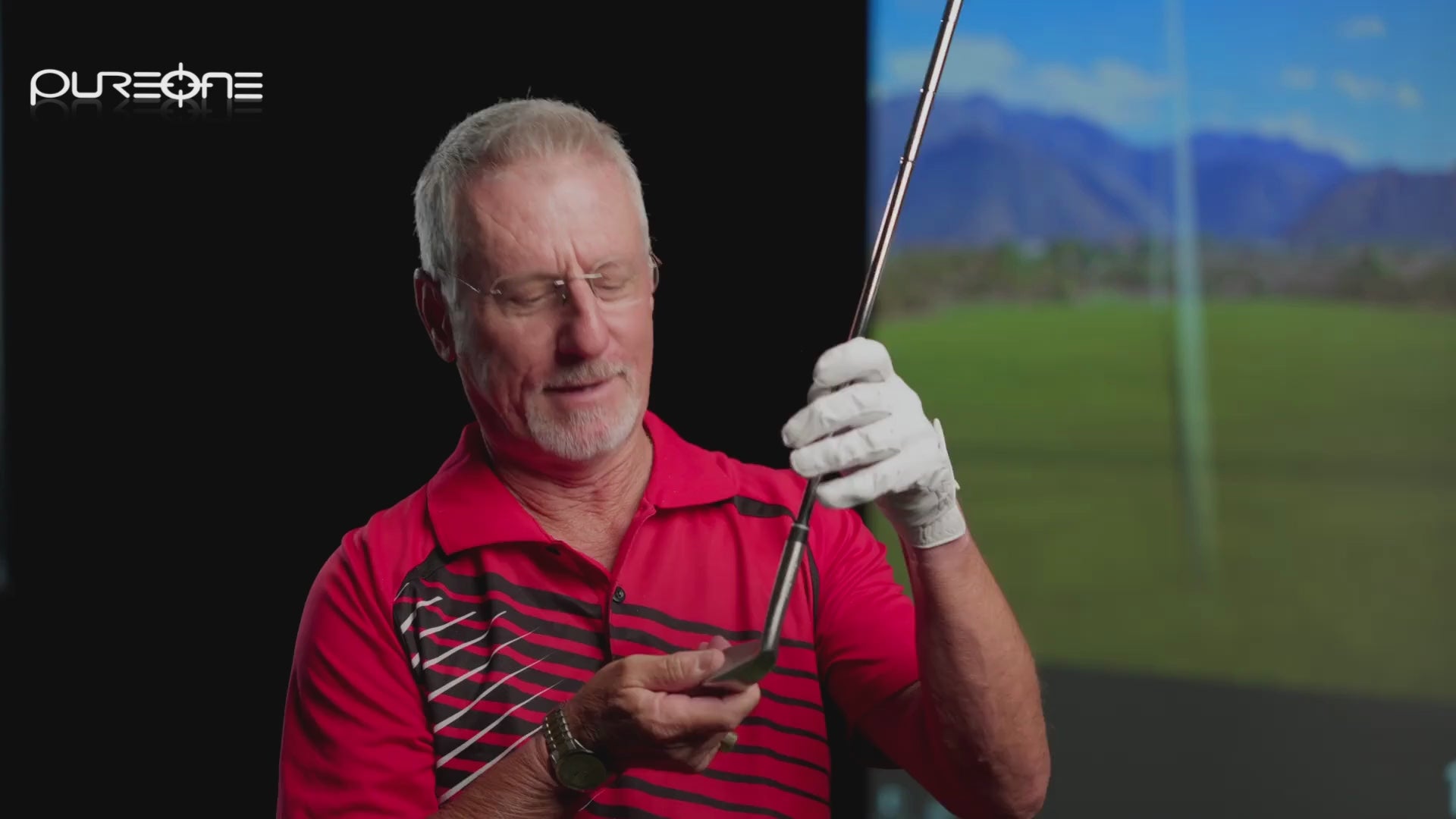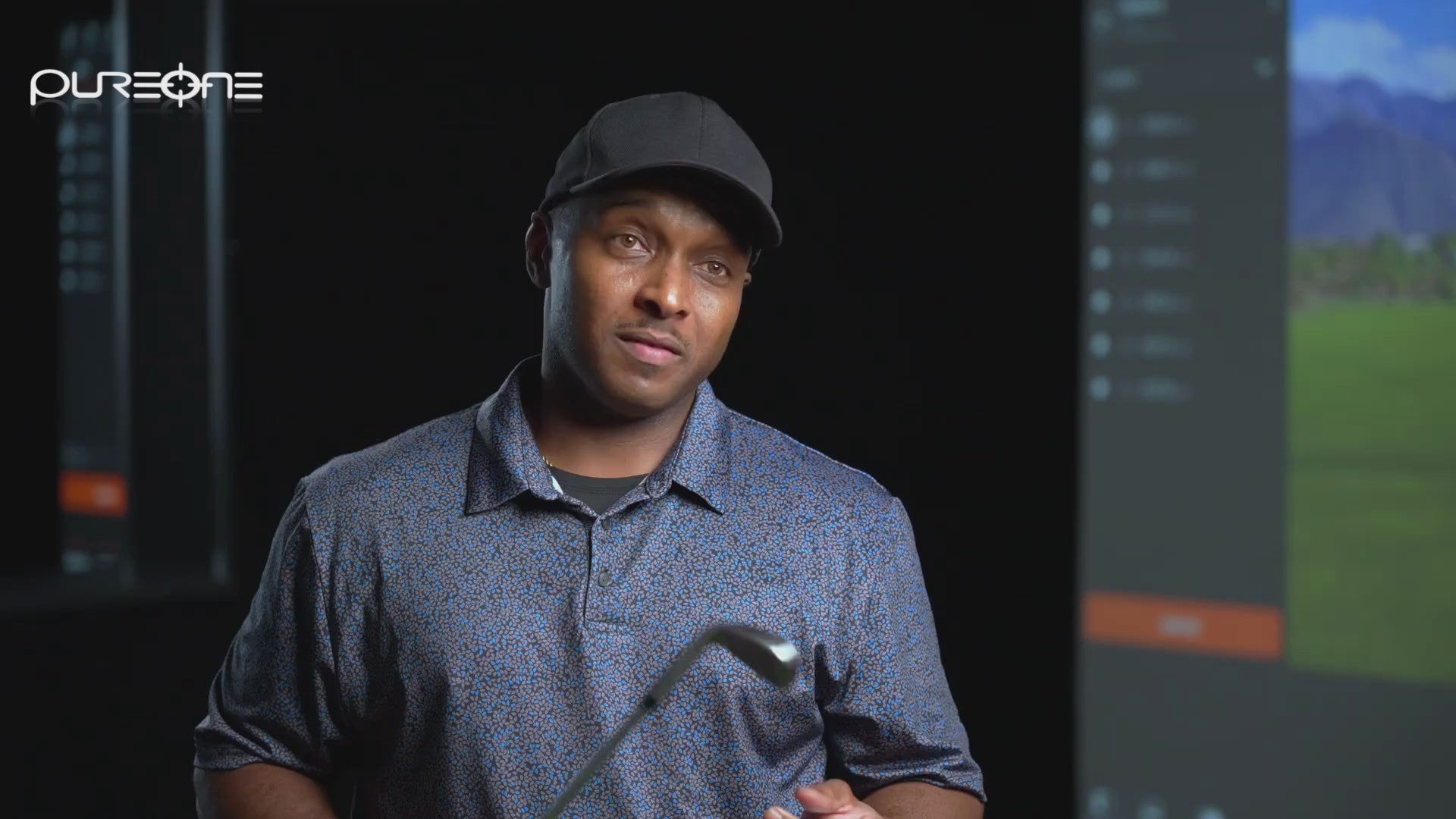8 Go-To Golf Swing Tips for Better Contact
Apr 03, 2025
After 30 years in the industry and over 20 years teaching players of all abilities, I've gotten all sorts of questions about which golf swing tips are the best. But the question I get most often isn't about distance — it's about consistency.
"How do I make solid contact and improve my ball-striking?"
Pure contact is that magical feeling when the clubface meets the ball exactly where it should. The ball compresses perfectly, and you barely feel impact in your hands. It's golf's equivalent of hitting the sweet spot on a baseball bat or tennis racket. It's addictive.
Here are my go-to golf swing tips that have helped thousands of my students find that pure contact more consistently. These aren't quick fixes, they're fundamentals that require practice, but they work.
Perfect Your Grip Pressure
Grip pressure matters more than most realize, so I tell my students to imagine holding a tube of toothpaste with the cap off. Grip it firmly enough that it doesn't fly away, but gently enough that no toothpaste squeezes out. That's your ideal pressure.
Too tight, and you'll feel tension in your forearms, wrists, and shoulders. Too loose and the club will twist at impact. Find that middle ground.
Master Ball Position
Consistent ball position in golf is critical, but often misunderstood.
For most iron shots, position the ball just forward of center in your stance, a smidge up for long irons and a smidge back for short irons. I see too many amateurs playing the ball too far forward, forcing them to lean back to make contact. This creates those thin shots that sting your hands or fat shots that barely travel.
The ball should be positioned where your club naturally bottoms out in your swing arc.
Stay in Your Box
Maintain your posture throughout the swing — I call this "staying in your box."
To help, draw an imaginary box around your setup position. Your head, spine angle, and hip height should stay relatively constant during your swing. The moment you stand up (early extension) or drop down significantly, you change the bottom of your swing arc — and pure contact becomes luck rather than skill.
Transfer Weight Correctly
Focus on your weight transfer, starting with about 55 percent of your weight on your lead foot at address. During the backswing, allow your weight to shift to your trail foot, but never more than 80 percent.
On the downswing, move that weight decisively forward. By impact, at least 80 percent of your weight should be on your lead foot. This forward shift helps you hit down on the ball properly with irons.
Keep Hands Quiet
Quiet hands lead to pure contact. Your hands should be passive followers, not active leaders. The big muscles — shoulders, torso, and hips — control the swing, so your hands simply hold on for the ride. When hands get too active, timing becomes critical, and your consistency suffers.
Stabilize Your Head
Always maintain a stable head position. I don't mean keep your head completely still — that creates tension, which can do more harm than good. However, excessive head movement changes your perspective and alters your swing plane.
I tell my students to imagine balancing a cup of water on their head. A little movement is fine, but don't spill the water.
Finish Your Backswing
Rushing the transition from backswing to downswing is a common amateur mistake. Give yourself time to complete the backswing. Feel the club set at the top before transitioning down. This creates rhythm, impeccable tempo, and allows your body to sequence properly.
Commit to Every Shot
One of my favorite golf swing tips is simple: Just commit to the shot, since indecision will be a killer.
Once you've selected your club and target, clear your mind of mechanics. Make a practice swing that produces the shot shape you want, then step in and replicate that feeling. Trust your preparation.
Practice with Purpose
Pure contact isn't about perfect mechanics, it's about functional mechanics that you can repeat. Work on these elements one at a time to avoid overwhelming yourself by trying to fix everything at once.
Remember, the best players in the world aren't thinking about eight swing thoughts when they're over the ball. Instead, they've dialed in their fundamentals through practice, allowing themselves to simply repeat the process before each swing. Your goal should be the same — practice deliberately until these elements become second nature.
By following these golf swing tips, you'll transform your game and become a lethal ball-striking machine.
Brendon Elliott is an award-winning PGA Professional and golf coach, having earned 25+ Prestigious Industry Awards in his career. As a freelance writer, his golf instruction articles have also been published by PGA.com, PGA Magazine, Golf.com, and GolfWRX. You can discover more about Elliott on his website.






